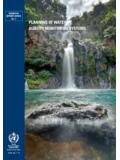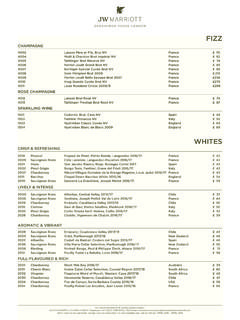Transcription of Raising Native Plants - Nature Space
1 LAND MANAGEMENTNATIVE TREESR aising Native Plants from CuttingsIntroductionA number of the more commonly grownnative Plants have always been availablefrom commercial nurseries, though in thepast these have generally been speciesmost suited to ornamental or landscapeuse. An increasing number of nurseriesare now supplying a much wider range ofeco-sourced material, and can even growto order, if the numbers required are largeenough. Even so, it can be rewarding andeducational to raise your own Plants foruse in your own, or other, information on the collection of nativeseedlings from existing stands of nativebush, ask for the Environment Topic Enhancing Indigenous Vegetation inProtected Areas .This Environment Topic covers thepropagation of Native Plants from many Native plant species produceabundant viable seed, others do not, suchas: Brachyglottis repanda (Rangiora),Pomaderris apetala (Tainui), someCassinia (Tauhinu), and and Senecio spp produce someviable seed, but are more easilypropagated from cuttings.
2 Other species,propagate equally well from seed orcuttings, a handy attribute in a year whenseed is not available. These includeAristotelia serrata (Wineberry), Fuchsiaexcortica (Kotukutuku), Griselinia littoralis(Broadleaf), Myoporum laetum (Ngaio),Weinmannia racemosa (Kamahi), someCarmichaelia ( Native broom), Coprosma(mostly the large leafed ones and ), Corokia, Hebe, and Sophora(Kowhai).CuttingsPlants grown from cuttings are clones ofthe parent plant, they are geneticallyidentical. This may be desirable in usessuch as shelter planting, but less desirablein mixed planting situations. This can beovercome to some extent by collectingcuttings of any one species from a numberof parent types of cuttings are used, andthese relate to the age of the materialcollected.
3 These, in increasing age are -softwood cuttings, semi-hardwood cuttings,and hardwood Softwood CuttingsThese are made from soft new growth,which commonly occurs in spring, but mayfor some species or in some seasons,occur at other times during the year. Latespring or early summer is the normal timefor collecting these cuttings. From a healthyplant, select average sized growing shootsfrom a lateral (side branch). These shouldbe well developed, still flexible (ie notwoody), but snap easily like freshasparagus when bent sharply. As a guide,length should be between 5cm and Semi-hardwood CuttingsThese are taken from partially hardened orsemi-mature wood which is present after agrowth flush. Collection is normally carriedout later in summer, between January andApril.
4 Cuttings seem to be best between7cm and 15cm in :LM:NT3: June 20022. By cutting a lateral approximately 5mmbelow a node or joint, using a knife,secateurs, or other suitable tool which willproduce a clean cut at right angles to is very important that cutting material bekept cool and out of direct sunlight untilthey can be prepared and planted. Tofurther reduce the risk of drying, cuttingsshould be taken from shaded parts of theplant early in the morning, or on cloudy orslightly damp days when transpiration willbe at a minimum. Material should be keptcool and moist during softwood and semi-hardwood cuttings,the young growing tips can be left on, but30 - 50% of the foliage should be removedfrom the stem, using scissors or hardwood cuttings remove the soft tipsand up to 75% of the foilage.
5 Large leaveson all cuttings should be reduced in size tofurther reduce moisture loss. For speciesthat are difficult to root, a vertical cut of2 3cm from the bottom of the stem canbe made to promote callus should be kept cool and moistduring all these operations.(See page 4 for a list of Native plantssuitable for propagation by cuttings)3. Hardwood CuttingsHardwood cuttings are generally collectedin early Winter (May), from the previousseason s growth that has matured andbecome woody. Two year wood issometimes collected, but in general, theolder the material, the slower it is to callusand form roots. Hardwood cuttings aregenerally longer, say 25cm to 30cm,though some may only need to be 10cm can be taken in two main ways:1. As heel cuttings, by peeling a lateralfrom the main stem of the parent is particularly suitable for Hebes andCoprosmas.
6 The excess stem part istrimmed back to produce a small a heel cutting from a Coprosma cutting from a Coprosma cutting with lower leaves removed and upper leavestrimmed, to reduce moisture or semi hardwood cuttingsshould be planted into suitable containersin a 50/50 potting mix, clean river sandmixture, in shadehouses or shelters. Planthalf the length of the cutting, by making ahole, rather than forcing the cutting into themixture. Firm the medium up and aroundthe cutting to ensure it doesn't loosen,which would allow the newly formed rootsto dry cuttings can be lined out in openground, in well cultivated soil. A narrowtrench 10 15cm can be formed and, if thesoil is heavy, lined with 2cm of clean riversand. The soil is firmed up around thecutting in the normal way.
7 The commercialnursery practice of wrenching to promotefibrous root growth can be followed ifknowledge, time, or equipment is the hardwood cuttings are to be rooted incontainers and grown in a shadehouse orshelter, a 2/3 potting mix, 1/3 sand mixturecan be prepared, and the cuttings treatedas for softwood and many Native cuttings will formroots naturally, all will benefit to someextent from the use of growth regulators, orrooting hormones. Products are availablefor all types of cuttings, just follow thedirections on the appropriate cuttings should be kept well watered,and the leaves kept moist with a fixed orhand mister. The production of a goodcrop of new leaves should indicate goodroot development. At this stage the plantscan be potted up, or transferred into roottrainers, and grown on.
8 Prior to plantingout in the field in the second spring, pottedplants should be put out into sheltered andshaded areas where they can harden Take cuttings from a number of Plants toensure genetic variability. Take cuttings from healthy Plants . Short laterals should be used rather thanterminal shoots. Always use a clean knife, sharpsecateurs, or other tool such as razor orscalpel which will produce a clean cut. Keep cuttings cool and moist at all timesduring preparation. Keep detailed Materials Handbook for SoilConservation, Water and SoilMiscellaneous Publication Number 95 Planting Native Trees, John Millard - NZNatural HeritageFoundationNative Forest Restoration, Tim Porteous -QEII National TrustA Field Guide to the Native Trees of NZ, JTSalmonPlanting Native Plants in hawke 's Bay hawke 's Bay Regional CouncilFor further informationFor further information, ask for other titles inthis series, or contact Land ManagementStaff at the hawke s Bay Regional Council 838 8527 Napier06 835 9200 Waipukurau06 858 8636 TOLL FREE0800 108 Plants SUITABLE FOR PROPAGATION BY CUTTINGS(or refer to the many good texts on Native Plants and plant Raising )Aristotelia serrata (makomako - wineberry)
9 Semi-hardwoodBrachyglottis repanda (rangiora)Hardwood or semi-hardwoodCarmichaeliaSemi-hardwoodCa ssinia fulvida (golden tauhinu)Cassinia leptophylla (tauhinu)Hardwood or semi-hardwoodCassinia vauvilliersii (mountain cottonwood)Hardwood or semi-hardwoodCoprosma acerosaCoprosma lucida (karamu) (mingimingi) (taupata) (karamu)Semi-hardwoodCorokia cotoneasterFuchsia excorticata (kotukutuku)Griselinia littoralis (Papauma, Kapuka)Semi-hardwoodHebe ramiflorus (mahoe, whiteywood)Metrosiderous excelsa (pohutukawa)Semi-hardwoodM. umbellata (southern rata)Semi-hardwoodMyoporum laetum (ngaio)Myrsine australIs (red matipo)Semi-hardwoodOlearia or semi-hardwoodPittosporum grown from seed but many willpropagate from cuttingsPlagianthus divaricatus (Makaka)Will propagate from cuttingsPodocarpus totara (Totara)Mostly propogated from seed but cuttingshave been used to produce shelter trees withthe adult form Pomaderris apetala (Tainui)Pomaderris apetala (Tainui)Senecio spp.







